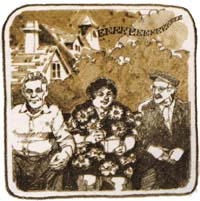|
|
|
|
|
|
Section 6: Functions continue 97 97
|
|
|
|
Let’s work an example using
LOG . The village of Musser
has installed a 12-o’clock whistle in the
firehouse steeple near the center of the village. If
the sound level at the steeple (2.2. meters from the
whistle) is 138 decibels, will resident near the edge of
the town, three kilometers away, be able to hear the lunch
whistle? The equation giving the sound level at the edge of
town is:
|
|
|

|
|
|
|
|
|
L
|
=
|
L0 – 20
log10
(r/r0)
|
|
|
|
L
|
=
|
138 – [ 20
log10
(3000/2.2)]
|
|
|
|
|
|
Where:
|
|
|
|
|
L0 is the sound level at a point near the
source (138 dB),
|
|
|
r0 is the distance from the near point to the
source (2.2 m),
|
|
|
L is the sound level at a distant point, and
|
|
|
r is the distance from the distant point to the source (3 km).
|
|
|
|
|
|
|
|
|
The exponential Function
|
|
|
|
The Yx function (
Y^X if you execute it from the display), is used
to raise numbers to powers. Using Yx
permits you to raise a positive real number to any real power—that is,
the power may be positive or negative, and it may be an integer, a fraction,
or a mixed number. Yx also permits you to
raise any negative real number to the power of any integer (within the
calculating range of the calculator, of course).
|
|
|
|